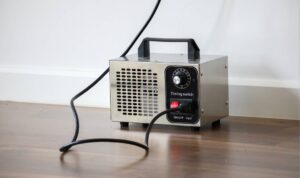While the attic may be out of sight, it should never be out of mind – especially when it comes to mold in attic.
This silent invader thrives in damp, dark, and neglected spaces, and an attic provides an ideal breeding ground.
Mold poses not just structural risks to your home but also health risks to your family. This article aims to guide you through identifying, handling, and preventing mold in your attic, emphasizing mold remediation, mold removal, and mold inspection.
The Anatomy of Mold
Mold is a type of fungus that grows in multicellular filaments. It flourishes in humid conditions and can sprout on a variety of surfaces, including wood, drywall, and insulation – all commonly found in attics.
Understanding how mold grows and spreads can help you take appropriate steps to combat it.

Signs You May Have Mold
The presence of mold in your attic may first be indicated by a musty odor.
Physical signs include dark spots on walls or ceilings and deterioration in wooden structures.
If your home has recently suffered water damage or you notice consistent moisture buildup in your attic, these are also signs that mold could be present.
Health Risks of Mold Exposure
Mold can pose several health risks, including respiratory issues, skin irritations, and allergic reactions.
People with compromised immune systems or preexisting health conditions may experience more severe symptoms.
Identifying and removing mold promptly is crucial for maintaining a healthy living environment.
The Importance of Mold Inspection
Before any remediation steps are taken, it is crucial to undertake a thorough mold inspection.
This involves checking not just the visible areas of your attic but also the hidden area.

DIY vs. Professional Mold Removal
For minor mold issues, DIY solutions like scrubbing with bleach may seem sufficient.
However, for more extensive problems or mold types that are potentially hazardous, professional mold removal services are advised.
These experts have the training, equipment, and chemicals to eliminate mold safely and effectively.
Mold Remediation Explained
Mold remediation goes beyond just removing visible mold: it aims to restore the affected area to a condition where mold is less likely to return.
This often involves addressing the underlying issues causing mold, such as poor ventilation or water leaks.
Remediation may require the removal and replacement of contaminated materials like insulation or drywall to ensure a mold-free environment.
Preventative Measures
After the mold is removed, taking preventative measures is key to ensuring it doesn’t return.
This might include improving ventilation, fixing leaks, or installing a dehumidifier in the attic. Routine inspections can also help catch any new mold growth before it becomes a problem.

Insurance and Legal Considerations
Some homeowner insurance policies cover mold damage, but there are often limitations or conditions. Always check your insurance policy and consult with your insurance company before starting any mold remediation work.
Ignoring mold in your attic is not an option. It is a problem that generally worsens over time, affecting the health of your family and the value of your property.
From mold inspection to mold removal and mold remediation, each step is crucial in effectively dealing with this issue. Being proactive can save you time, money, and a lot of headaches in the long run.



